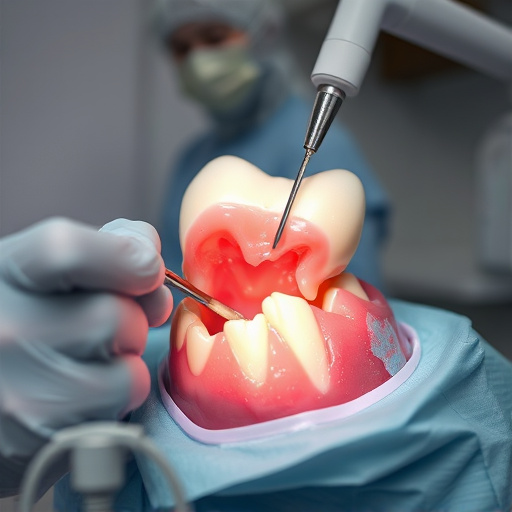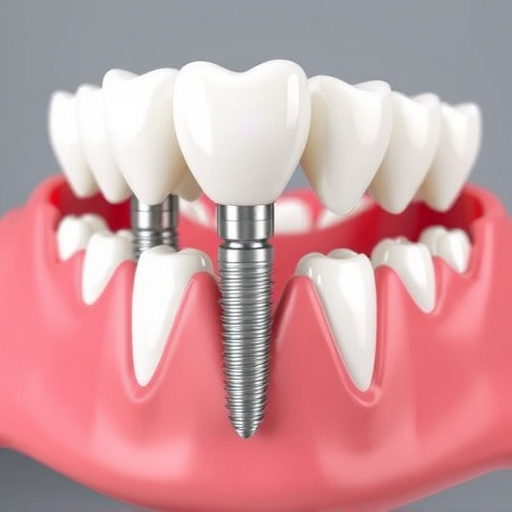Tooth colored fillings, made from composite resin, offer a natural and durable solution for damaged teeth, enhancing aesthetics and oral health. They are versatile, used for repairs, crowns, and even clear aligners, providing a discreet alternative to metal amalgams. Proper oral hygiene and regular check-ups ensure longevity, with expert placement by qualified dentists maximizing success.
Tooth colored fillings offer a modern, aesthetically pleasing alternative to traditional metal amalgam. Crafted from composite materials, these fillings match the natural color of teeth, making them ideal for patients seeking discreet dental solutions. This article explores how tooth colored fillings can be utilized across various dental procedures, from cavity repairs to cosmetic enhancements. We’ll delve into the benefits, materials, and considerations ensuring their longevity and aesthetic appeal.
- Understanding Tooth Colored Fillings: Materials and Benefits
- Common Dental Procedures Using Tooth Colored Fillings
- Advantages and Considerations for Longevity and Aesthetics
Understanding Tooth Colored Fillings: Materials and Benefits

Tooth colored fillings, also known as composite resin fillings, are a popular and advanced option in general dentistry for restoring damaged or decayed teeth. These innovative materials offer both aesthetic appeal and functional benefits, making them suitable for various dental procedures. Unlike traditional metal fillings that can be noticeable, tooth-colored alternatives seamlessly blend with the natural tooth structure, ensuring an unobtrusive repair that enhances your smile.
The primary materials used in tooth colored fillings are a mix of resin and fine glass particles. This composite is carefully crafted to match the color and transparency of teeth, providing a lifelike appearance. The benefits extend beyond aesthetics; these fillings are also highly durable, capable of withstanding chewing and biting forces while maintaining their shape. Moreover, they preserve more of the natural tooth structure compared to traditional methods, promoting better oral health and reducing the need for additional dental procedures in the long term, making them a cost-effective and patient-friendly choice during regular dental cleanings.
Common Dental Procedures Using Tooth Colored Fillings

Tooth colored fillings have revolutionized many common dental procedures, offering a natural and aesthetically pleasing alternative to traditional metal amalgam. They are particularly useful for restoring damaged or decayed teeth, providing both functional and cosmetic benefits. These advanced composite materials match the shade of your natural teeth, making them virtually indistinguishable once placed.
In addition to tooth restoration, tooth colored fillings are also ideal for creating dental crowns. By bonding the filling material to a custom-made crown, dentists can provide a long-lasting solution for severely damaged or weakened teeth. Furthermore, in cases requiring urgent attention, such as in emergency dental care situations, these fillings offer a quick and effective temporary repair until a more permanent solution can be implemented. Even clear aligners, popular for invisible braces, can incorporate tooth colored fillings to address decayed teeth during the alignment process.
Advantages and Considerations for Longevity and Aesthetics

Tooth colored fillings offer a significant advantage over traditional metal fillings when it comes to longevity and aesthetics. They blend seamlessly with natural teeth, providing a more discreet solution for dental repairs. This aesthetic benefit is particularly valuable for visible areas of the mouth, ensuring patients maintain a confident smile even after dental procedures.
While tooth colored fillings have numerous advantages, considerations are essential. These composite fillings may not be suitable for all cases, especially in areas subject to intense chewing or bite forces, such as molars. Additionally, proper oral hygiene and regular dental check-ups are crucial to ensuring the longevity of these fillings, as they can last several years with good care, sometimes even outperforming metal alternatives in terms of durability in specific circumstances. Choosing a qualified family dentistry practice for placement can also contribute to overall success, as experts in the field can offer guidance on aftercare and recommend suitable dental implants or crowns if needed.
Tooth colored fillings offer a versatile solution for various dental procedures, combining functionality with aesthetic appeal. By utilizing advanced materials, these fillings not only repair damaged teeth but also blend seamlessly with natural dentition, ensuring both comfort and confidence for patients. Whether used for cavities, chips, or even as a cosmetic enhancement, tooth colored fillings provide a durable and visually pleasing alternative to traditional options. Understanding the benefits and proper care can help extend their longevity, making them a reliable choice for maintaining a healthy and attractive smile.














